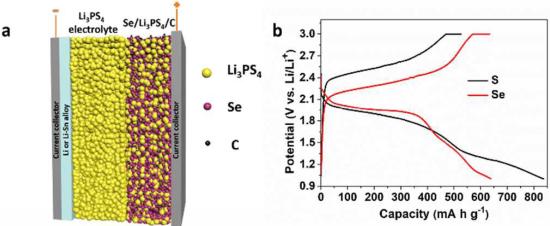A research team from Brown University and the University of Maryland has developed a new solid ion-conductor that combines copper with cellulose nanofibrils—polymer tubes derived from wood. In research published in the journal Nature, the team demonstrates that the paper-thin material has an ion conductivity that is 10 to 100 times better than other polymer ion conductors.
It could be used as either a solid battery electrolyte or as an ion-conducting binder for the cathode of an all-solid-state battery.
By incorporating copper with one-dimensional cellulose nanofibrils, we demonstrated that the normally ion-insulating cellulose offers a speedier lithium-ion transport within the polymer chains. In fact, we found this ion conductor achieved a record high ionic conductivity among all solid polymer electrolytes.
—Liangbing Hu, a professor in the University of Maryland’s Department of Materials Science and Engineering and co-corresponding authorThe work was a collaboration between Hu’s lab and the lab of Yue Qi, a professor at Brown’s School of Engineering.
Most of the solid electrolytes investigated so far are ceramic materials, which are great at conducting ions but also are thick, rigid and brittle. Stresses during manufacturing as well as charging and discharging can lead to cracks and breaks.

The material introduced in this study, however, is thin and flexible, almost like a sheet of paper. Its ion conductivity is on par with ceramics.
Qi and Qisheng Wu, a senior research associate at Brown, performed computer simulations of the microscopic structure of the copper-cellulose material to understand why it is able to conduct ions so well. The modeling study revealed that the copper increases the space between cellulose polymer chains, which normally exist in tightly packed bundles. The expanded spacing creates what amount to ion superhighways through which lithium ions can zip by relatively unimpeded.
The lithium ions move in this organic solid electrolyte via mechanisms that we typically found in inorganic ceramics, enabling the record high ion conductivity. Using materials nature provides will reduce the overall impact of battery manufacture to our environment.
—Yue Qi, co-corresponding authorIn addition to working as a solid electrolyte, the new material can also act as a cathode binder for a solid-state battery. In order to match the capacity of anodes, cathodes need to be substantially thicker. That thickness, however, can compromise ion conduction, reducing efficiency. In order for thicker cathodes to work, they need to be encased in an ion-conducting binder. Using their new material as a binder, the team demonstrated what they believe to be one of the thickest functional cathodes ever reported.
The researchers are hopeful that the new material could be a step toward bringing solid state battery technology to the mass market.
The research at Brown University was supported by the National Science Foundation (DMR-2054438).
Resources
